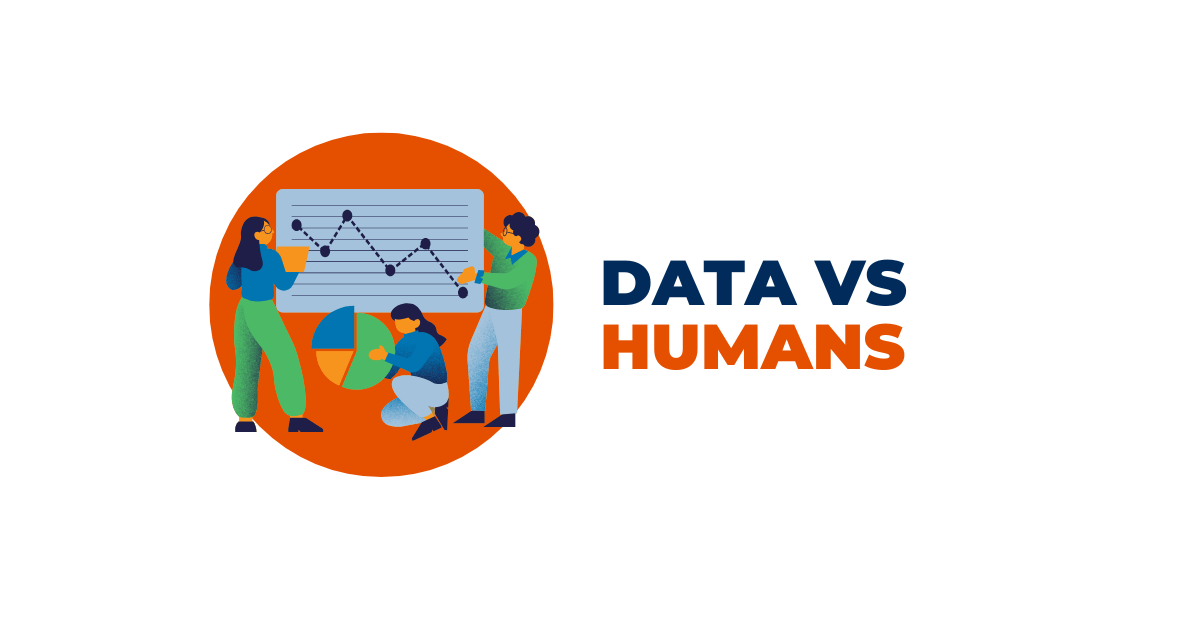- Beyond The Brief
- Posts
- Data vs Humans
Data vs Humans
Where Do Insights Really Come From?

Hey!
Marketers act like every consumer insight is a breakthrough.
"Gen Z wants authenticity!" - "People like choices!" - "Consumers hate bad service!"
No kidding.
We’re not discovering the hot water here. History isn’t repeating itself—it’s just human nature on loop.
Trends change. People don’t. They’ll always want:
✔️ Choice—More options, but not too many.
✔️ Affordability—The best quality at the best price.
✔️ Recognition—To feel seen and understood.
✔️ Convenience—Less friction, more ease.
✔️ Trust—Deliver on promises, or lose loyalty.
✔️ Control—People hate being manipulated. Transparency wins.
✔️ Speed—Faster always beats slower.
✔️ Simplicity—Complexity kills adoption.
✔️ Status—People want to look good.
✔️ Security—Physical, financial, digital—doesn’t matter. People want safety.
✔️ Entertainment—Make life more fun, and they’ll stick around.
✔️ Personalization—One-size-fits-all is dead.
✔️ Reliability—If it doesn’t work, nothing else matters.
None of this is new. The question isn’t what people want—it’s how well you deliver.
You don’t need a million-dollar research budget to figure out why people buy.
You need curiosity, awareness, and the willingness to listen.
The Report Trap: More Data, Fewer Insights
The global big data market was valued at $327.26 billion in 2023 and is expected to grow at a CAGR of 14.9% through 2030.

“Big Data Market Size, Share & Trends Analysis Report by Product, by Technology (Analytics, Database, Visualization, Distribution Tools, Others), by Service, by End-Use, by Region, and Segment Forecasts, 2024 - 2030.”
Sounds great—until you realize most businesses are drowning in raw data and starving for actual insights.
Here’s the problem: Data isn’t the same as intelligence.
Most reports give you:
📊 Too much information—but no real takeaways.
📉 Complexity that overwhelms—instead of clarity that guides.
💰 High costs—making deep insights a luxury few can afford.
During my workdays, I often see huge datasets with zero meaningful analysis. Even bigger institutions fall into this trap—mistaking volume for value. The real challenge isn’t collecting data—it’s extracting meaning from it.
Data Growth ≠ Insight Growth
And the flood isn’t slowing down. Digitization, AI, and connected devices (smartphones, wearables, autonomous vehicles, etc.) are pushing data generation into overdrive. Every industry—healthcare, security, logistics, finance—relies on big data. But without the right systems, it’s just noise.
That’s why products that translate data into actionable insights stand out.
Last week, I started a trial with WHOOP. Unlike most trackers that just spit out numbers, it actually analyzes my raw data and turns it into insights I can use.

WHOOP, Unlock Your Potential, “WHOOP | Your Personal Digital Fitness and Health Coach.”
That’s the difference between having data and knowing what to do with it.
The future isn’t about collecting more—it’s about making sense of what we already have.
So, What’s the Answer?
The best strategists don’t worship data. They use it.
📊 Data tracks behavior—what people click, buy, abandon.
🗣️ Conversations reveal motivations—why they do it, what they feel, what they'll do next.
Most businesses overdose on the first and ignore the second.
Executives sit in meetings, hypnotized by dashboards, convinced a spike in engagement means they “cracked the code.” They didn’t. They just found another data point.
Numbers tell you what happened. People tell you why.
Amazon doesn’t dominate retail because they have the best reports. They dominate because they know you hate waiting.They didn’t need a 60-slide deck to figure out faster = better. They just did it.
Nike doesn’t sell shoes. They sell identity. That insight wasn’t pulled from a spreadsheet—it was observed in the streets, in locker rooms, in people’s behavior.
Uber didn’t launch with an algorithm. They started with a simple truth: People hate waiting for cabs in the rain.
The Illusion of Data-Driven Genius
Big companies love to brag about being "data-driven." But let’s be honest—most just use numbers to confirm what they already believed.
→ Research says “consumers value sustainability”? No kidding.
→ Heatmaps show people don’t click things they don’t understand? Revolutionary.
→ AI detects that “fast service” is preferred? Groundbreaking.
Insight isn’t about more data. It’s about having the guts to act on the obvious.
The 80/20 Rule of Real Insights
If you want better insights, spend 80% of your time watching people, 20% reading reports.
📍 Go to a store. See what people pick up and put back.
🎧 Listen to real conversations. Reddit, Twitter, Discord—where filters don’t exist.
🗣️ Talk to customers. Not in focus groups, where they say what sounds smart, but in real life.
Data should support your strategy, not be your strategy.
Great marketing isn’t built on numbers. It’s built on human truths.
If you’re not talking to people, you’re missing the real insights.
Until next time,
Marti
Reply